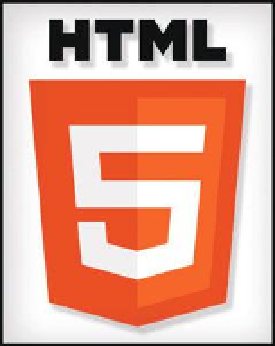Game Development Reference
In-Depth Information
One possible solution would be to design your sounds so that they
contain a wider variety of harmonic information. Take the case of a death
metal kick drum—the main kick's fundamental is around 80Hz, so there's
no way a typical mobile speaker can hope to reproduce that. However
there's also a beater sound around 2.5KHz and higher, and that's perfectly
perceivable in this context. By including both sounds in your sample, you
have now created a situation where small speaker playback will catch the
upper frequencies and full range playback will also reveal the low end. This
technique is also very ef ective for all kinds of sound ef ects, from explosions
to clicks and rollovers. Think of it as getting two sounds for the price of one!
HTML5: The Pitfalls of a New
Standard
A while back, Apple started a trend away from
Adobe's ubiquitous Flash platform with its iPhone
and iPad devices in favor of HTML5. In 2007,
HTML5 was a highly regarded blip on the radar of
Internet and web design standards, and not due
out in full adoption and release until 2014. Apple's
announcement gave it a huge push forward, and
as a result HTML5 adoption has been on the rise
ever since. The trouble was, and currently is, that
there are no all-in-one solutions for developing
interactive content that will run on every device
using HTML5. Up until Apple's divesting of Flash
support, a Flash game could run on nearly every
hardware platform in existence, and still has an over
90 percent adoption rate online. The exclusion of Flash from the tablet and
mobile markets has sent shockwaves through the development community.
Keep in mind that the tablet market was small when Apple made its move,
and touch-based interaction was revolutionary. Now, tablets are all the rage
and the tools for simple content creation are just not ready for prime time.
HTML5 also comes with its own set of issues. One of these is the lack of
web-browser standards support across both browsers and platforms.
Currently, Apple's Safari, Mozilla Firefox, and Google Chrome of er the
most HTML5 support, leaving out Microsoft's Internet Explorer (IE),
although version 10 has closed the gap a certain amount and 11 is set
to improve the score. Flash has been ubiquitous and quite easy to use,
but has virtually no representation in the tablet market. HTML5 is on
the rise, but the drawback is that, as of this writing, there isn't an equally
functional HTML5-based App that has all the capabilities and ease of
use that Flash does. This means that nearly all functionality within the


































